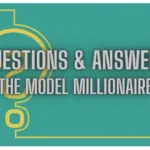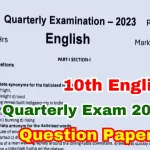Questions and Answers for “The Happy Prince”
-
What is the main theme of “The Happy Prince”?
The main theme of “The Happy Prince” is the selflessness and compassion that can be found in true kindness. The prince sacrifices his wealth and beauty for the welfare of the poor and needy. -
Why does the statue of the Happy Prince weep?
The statue of the Happy Prince weeps because he is deeply saddened by the suffering of the people in his city, even though he no longer has the ability to feel or experience the world. -
How does the swallow help the Happy Prince?
The swallow helps the Happy Prince by delivering messages of kindness and charity. He carries gold leaves and jewels from the statue to the poor and sick, fulfilling the prince’s wishes. -
What does the Happy Prince give away to help the poor?
The Happy Prince gives away his gold leaf covering, his sapphires, and his ruby eyes to help the poor. He gives them to people in desperate need, including a seamstress, a poor worker, and children. -
What lesson does the story of “The Happy Prince” teach?
The story teaches the importance of selflessness, empathy, and love for others. It encourages people to help those in need and to see beyond material wealth. -
What is the significance of the swallow in the story?
The swallow is a symbol of compassion and sacrifice. It chooses to stay with the Happy Prince, even though it is headed to Egypt, to help him fulfill his mission of charity. -
What happens to the Happy Prince at the end of the story?
At the end of the story, the Happy Prince is broken into pieces, but his soul is taken to heaven because of his acts of kindness. His selflessness is rewarded by the angels. -
Why is the Happy Prince no longer happy?
The Happy Prince is no longer happy because he sees the suffering and poverty around him, which makes him feel sorrow and guilt for having lived in luxury without helping others. -
What does the story suggest about wealth and happiness?
The story suggests that true happiness does not come from wealth or material possessions. Instead, it comes from acts of kindness and compassion toward others. -
How does the swallow contribute to the prince’s mission?
The swallow plays a crucial role in fulfilling the prince’s mission by delivering the jewels and gold to the poor, which allows the prince to alleviate their suffering. -
What is the relationship between the Happy Prince and the swallow?
The Happy Prince and the swallow share a bond of friendship. They help each other selflessly, with the swallow willing to stay in the city to assist the prince, even at the cost of its own journey. -
What is the irony in the story of “The Happy Prince”?
The irony lies in the fact that the Happy Prince, who once lived in luxury and had everything he could desire, now experiences true sorrow because of his awareness of the poverty around him. -
Why does the Happy Prince ask the swallow to stay?
The Happy Prince asks the swallow to stay so it can help him bring happiness to the poor and suffering people. Despite the swallow’s desire to migrate, it chooses to stay for the prince’s cause. -
What is the role of the townspeople in “The Happy Prince”?
The townspeople remain unaware of the prince’s selfless acts of charity. They see the statue as a symbol of wealth and beauty, not realizing the prince’s true sacrifice and compassion. -
How does the Happy Prince’s statue differ from his real life?
The statue of the Happy Prince appears majestic, but it is hollow and lifeless. In contrast, the real prince, while once happy in his wealth, becomes compassionate and self-sacrificing after seeing the world’s suffering. -
What happens to the swallow at the end of the story?
The swallow dies next to the statue of the Happy Prince after fulfilling its mission. Its devotion and selflessness lead to its peaceful death, and it is also rewarded by being taken to heaven. -
How does the Happy Prince change from the beginning to the end?
At the beginning, the Happy Prince is unaware of the world’s suffering, but by the end, he becomes deeply compassionate and willing to sacrifice everything for the welfare of others. -
Why does the prince want to help the poor people?
The prince wants to help the poor because he realizes that wealth and beauty are meaningless if they are not used to alleviate the suffering of others. -
How does the Happy Prince contribute to the poor woman and her child?
The Happy Prince gives away his jewels and gold to help the poor woman and her child. The jewels help her buy food, while the money provides her with the means to survive. -
What happens to the statue after the prince’s death?
After the prince’s death, the statue is dismantled, and his broken pieces are discarded. However, the statue’s soul ascends to heaven, where it is honored for its selflessness.
Indian Books on “The Happy Prince” Question Answer with Author and Publications
-
The Happy Prince by Oscar Wilde
Author: Oscar Wilde
Publication: Penguin India
Content Type: A comprehensive collection of moral lessons and the selflessness of the main character. The book features insightful discussion questions on the themes of compassion, sacrifice, and social issues. -
The Happy Prince & Other Tales
Author: Oscar Wilde
Publication: Rupa Publications
Content Type: This book explores Wilde’s stories with interpretive questions and deeper analysis on topics such as love, generosity, and societal indifference. Ideal for classroom discussions. -
The Complete Works of Oscar Wilde
Author: Oscar Wilde
Publication: HarperCollins
Content Type: Includes various stories, including “The Happy Prince.” The questions in the book focus on Wilde’s literary techniques, his use of symbolism, and character analysis. -
Oscar Wilde’s Fairy Tales
Author: Oscar Wilde
Publication: Jaico Publishing House
Content Type: A collection of fairy tales that provide insights into Wilde’s philosophy. Questions include moral evaluations and deeper inquiries into the characters’ decisions and their repercussions. -
The Happy Prince and Other Stories
Author: Oscar Wilde
Publication: Tara Publishing
Content Type: The book includes analysis of the characters and settings, with questions revolving around the emotional journeys of characters and what readers can learn from their experiences. -
Wilde’s Stories
Author: Oscar Wilde
Publication: Oxford University Press
Content Type: This book is a detailed exploration of Wilde’s storytelling techniques. The questions ask readers to reflect on the moral undertones and broader themes present in Wilde’s tales, including altruism. -
The Selfish Giant and Other Stories
Author: Oscar Wilde
Publication: Puffin Books
Content Type: A selection of Wilde’s stories, including “The Happy Prince,” with accompanying analysis and interpretation questions that delve into the themes of sacrifice, kindness, and redemption. -
The Happy Prince – A Retelling for Children
Author: Neelam M.
Publication: Scholastic India
Content Type: A simplified retelling for children, with questions that focus on understanding the central moral lessons and character motivations. The questions also help kids relate the story’s themes to their own lives. -
Oscar Wilde: Collected Works
Author: Oscar Wilde
Publication: Fingerprint Publishing
Content Type: This collection includes “The Happy Prince” and other stories, offering a deep dive into Wilde’s style. The questions explore Wilde’s use of irony and critique of societal structures. -
Fairy Tales for Children
Author: Oscar Wilde
Publication: Goyal Publishers & Distributors
Content Type: The book contains a section dedicated to “The Happy Prince” with discussion questions focusing on the lessons of empathy, generosity, and how individuals can make a difference in society.
The Happy Prince Question Answer: An In-Depth Exploration
“The Happy Prince,” a beloved fairy tale by Oscar Wilde, offers profound insights into the human condition. It touches upon themes such as sacrifice, compassion, and the power of selfless love. In exploring these themes through engaging questions and answers, we can gain a deeper understanding of the moral teachings embedded in the story. The tale of a statue of a once-happy prince, now mourning the suffering of his people, is both poignant and timeless.
One of the most crucial aspects to focus on when analyzing “The Happy Prince” is the transformation of the main character. The prince, initially surrounded by luxury, has no idea of the hardships faced by the people in his kingdom. However, as his statue becomes a medium for his sorrow, he learns the true meaning of compassion. This shift is best understood through questions that ask about the prince’s changing perspective—such as why he chooses to give away his jewels and gold to the poor and what these acts symbolize.
The story’s plot is also deeply tied to the theme of friendship and self-sacrifice, represented by the swallow. The bird chooses to stay behind, foregoing its migration to Egypt, to assist the prince in helping the poor. This selflessness is central to understanding the messages of charity and kindness that Wilde intends to convey. Readers can engage with questions that examine the relationship between the prince and the swallow, asking how their bond contributes to the overall moral of the story.
Another area to focus on in answering questions about the story is the symbolism Wilde uses, particularly the transformation of the prince’s statue. The statue, once golden and adorned with jewels, becomes a symbol of empathy and moral integrity as the prince gives away all that he has. Questioning the significance of these physical transformations offers readers a way to explore Wilde’s critique of wealth and societal values.
In addition to analyzing the characters and themes, “The Happy Prince” is an excellent text for discussing Wilde’s use of literary techniques. The stark contrast between the prince’s life of luxury and the harsh realities of the people around him serves as a critique of the class divide. Questions may ask readers to analyze Wilde’s social commentary and how it applies to modern society.
FAQ for The Happy Prince Question Answer
-
What is the main theme of “The Happy Prince”?
The main theme revolves around selflessness, compassion, and the importance of charity. The story critiques the divide between wealth and poverty, highlighting the joy found in helping others. -
Why does the Happy Prince weep?
The Happy Prince weeps because he feels sorrow for the suffering and poverty of the people in his kingdom, something he could not see when he was alive. -
What does the Happy Prince give to the poor?
The prince gives away his gold, sapphires, and ruby eyes to help the poor, sick, and underprivileged individuals in his city. -
How does the swallow assist the Happy Prince?
The swallow helps by carrying the jewels and gold from the prince’s statue to the poor, fulfilling the prince’s wish to help those in need. -
Why does the swallow decide to stay with the Happy Prince?
The swallow stays because it is moved by the prince’s kindness and wants to help him in his mission of charity, even though it means sacrificing its migration to Egypt. -
What is the significance of the transformation of the Happy Prince’s statue?
The transformation signifies the prince’s moral growth. Once a symbol of material wealth, the statue becomes a representation of empathy and self-sacrifice. -
What happens to the Happy Prince at the end of the story?
At the end, the Happy Prince’s statue is destroyed, but his soul is taken to heaven as a reward for his acts of kindness and selflessness. -
What lesson does the story of “The Happy Prince” teach?
It teaches the importance of helping those in need, valuing compassion over wealth, and the fulfillment that comes from selfless acts. -
How does the relationship between the Happy Prince and the swallow reflect the story’s themes?
Their relationship showcases the values of selflessness and sacrifice, as both the prince and the swallow give up their comfort for the benefit of others. -
What role does the town play in the story of “The Happy Prince”?
The townspeople are unaware of the prince’s sacrifices and the changes made to the statue, highlighting the disconnect between the rich and the poor.
Latest Posts
- Step-by-step guide to download and apply for jee mains admit card 202
- Comprehensive 2025 government holidays and recruitment details for job seekers
- JEE Mains Admit Card 2025: Your Step-by-Step Guide to Downloading the Hall Ticket
- Everything You Need to Know About 2025 Government Holidays Recruitment
- Comprehensive Guide to rrb d group recruitment 2025 – Eligibility, Vacancies, and Application
- Detailed guide to nps trust recruitment 2025 vacancies, eligibility and apply process
- Comprehensive guide to hpcl recruitment 2025 notification, vacancies, and application process
- ignou bed admission 2025 complete recruitment guide with eligibility and process
- Comprehensive Guide to Indian Army Agniveer Recruitment 2025 Notification and Jobs
- Everything You Must Know About CBSE Board Exams 2025 Changes & New Rules





